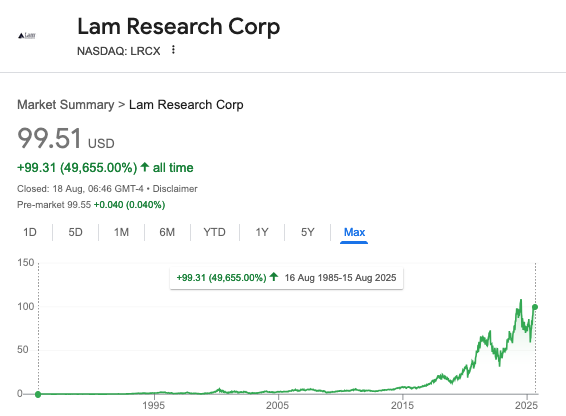Lam Research: Etching Out the Future
Since their IPO, Lam Research (Ticker: LRCX) has grown by just under 50,000%. Let's take a deeper look at this exceptional compounder.

What does Lam Research sell?
Lam Research sells tools used for wafer fabrication, which is a critical step in the creation of semiconductors. A semiconductor begins life as a silicon wafer. Thin films of materials are then deposited, patterned and modified onto the wafer in successive layers. Lam's deposition tools are used to lay down these films with atomic precision, while their etch tools carve out the ultra-fine features that define its circuits. Lithography then projects the chip’s patterns, and further rounds of deposition, etching, and cleaning gradually build up the dense architecture of transistors. Without Lam’s equipment, it would be impossible to manufacture semiconductors at today’s scale and complexity.
Lam’s customers are the major semiconductor manufacturers, including TSMC, Samsung, Micron and Intel. Consequently, a large majority of Lam's revenue comes from Asia (specifically Taiwan, China and South Korea). Lam's tools are a major capital investment for chipmakers. While less costly than ASML's EUV lithography machines ($200mn each), Lam's etch and deposition systems still run into millions of dollars each. Demand for Lam’s products is driven by the capital spending of semiconductor manufacturers. This rises and falls to reflect the end-market need, e.g. data centres, smartphones, computers, etc. Demand is also influenced by the evolution of technology, as the creation of advanced chips require the latest etch and deposition tools. Government subsidies and export restrictions further influence supply and demand. It is therefore important to emphasise that Lam operates with a concentrated set of customers in a cyclical sector.
